© 2025 Qualitetch Ltd. Site by i3MEDIA
Your total metal component manufacturing solution
Otherwise known as chemical etching, chemi etching, acid etching, chemical milling and PCM Qualitetch can help with your designs.
This metal is a very popular choice for chemical etching due to the non corrosion qualities of stainless steel and that parts generally in this material do not require additional plating & finishing once the material has been etched. Stainless steel is available in many grades and conditions such as annealed, half hard and full hard and in grades such as 304, 1.4301, 1.4310, 430S17, 316S11, 316L, 17-7PH, 321S31, S526, S527, 1.4307, 1.4404 and many others
Photo etching, a precise and versatile manufacturing method, finds extensive application in producing intricate metal components from stainless steel. Stainless steel, renowned for its durability, corrosion resistance, and strength, becomes even more versatile through this process, enabling the creation of complex and precise parts for a wide array of industries.
Stainless steel, an alloy primarily composed of iron, chromium, nickel, and other elements, exhibits remarkable resistance to corrosion, heat, and chemical damage. When subjected to photochemical etching, its inherent properties are leveraged to craft intricate components with exceptional accuracy and consistency.
The process of photochemical etching stainless steel initiates with the preparation of a stainless steel sheet. The metal undergoes rigorous cleaning to eliminate impurities, ensuring an immaculate surface for the subsequent stages. A light-sensitive photoresist material is then applied uniformly to the sheet's surfaces, forming a protective layer.
Utilizing phototooling techniques, a precise image of the desired component is transferred onto the photoresist through exposure to UV light. This exposure causes a chemical reaction in the photoresist, hardening the areas that correspond to the intended design while leaving the rest of the protective layer unaffected.
The stainless steel sheet, now protected by the photoresist mask, undergoes immersion in an etchant solution—typically an acid or chemical compound—where the unprotected areas of the metal are selectively dissolved. This chemical erosion precisely removes the material, leaving behind the intricately designed components on the stainless steel sheet.
Chemical etching offers unparalleled precision and flexibility, enabling the creation of intricate patterns, fine details, and complex geometries on stainless steel. It allows for incredibly tight tolerances, ensuring consistency and accuracy across batches of components.
The advantages of employing chemical etching on stainless steel are numerous. It provides a cost-effective means of producing intricate and complex designs without necessitating expensive tooling or extensive machining. Its adaptability facilitates rapid prototyping and efficient production, making it suitable for both small-scale and large-scale manufacturing.
Furthermore, the process preserves the inherent properties of stainless steel, such as its corrosion resistance, strength, and durability. This ensures that the final components maintain their integrity and functionality, making them ideal for applications demanding reliability in harsh environments.
Components manufactured through photochemical etching of stainless steel find wide-ranging applications across industries. They include precision mechanical parts in automotive and aerospace sectors, intricate meshes and screens in filtration systems, durable and corrosion-resistant medical instruments, and specialized components in electronics and telecommunications.
In summary, photo etching of stainless steel is a sophisticated manufacturing technique that harnesses the robust properties of this alloy to create precise, durable, and complex components. Its ability to maintain the inherent qualities of stainless steel while achieving intricate designs with exceptional precision makes it an indispensable method across diverse industries.
We manufacture both flat & formed components using stainless steels, with the aid of our photo chemical etching process, and we have our own dedicated in-house tool-room toolmaking team on hand to UK manufacture bespoke form tooling of all designations. The form tools we manufacture are everything from very simple knife and fork tools, such as simple 90 degree or 45 degree bend tools, through to more complex open tools in die sets and progression tools for 3d formed components parts to ensure the highest quality standards are met whilst meeting lead-time requirements of approximately 15 working days for new part metal components.
Qualitetch offers a total metal component solution for parts, and as well as photo etching we offer many other services and processes for UK manufacturing of thin gauge metal parts. We can also offer stainless steel components manufactured using other processes such as metal stamping / punching and EDM wire erosion & laser cutting of part of our services.
We have designations 304S15, 1.4301, 316, 316L, 316S11, 316S31, 301S21, 1.4310, 321S31, 17-7ph, 430S17, 304S16, S527,S526, 302S25. We also provide bright annealed, mirror polished, 2B and commercial grade finishes.
Our stainless steel is available from 0.0127mm through to 1.60mm including: 0.0127mm, 0.025mm, 0.038mm, 0.05mm, 0.075mm, 0.10mm, 0.125mm, 0.15mm, 0.18mm, 0.20mm, 0.25mm, 0.30mm, 0.40mm, 0.50mm, 0.70mm, 0.90mm, 1.00mm, 1.20mm, 1.50mm & 1.60mm in most tempers and specifications.
using stainless steel including: automotive components, medical devices, aerospace parts, electronic components, oil and gas, telecoms products, renewable energies, defence related parts, and arts to just name a few.
The photo etching process produces metal components that are both stress-free and burr-free compared to more traditional manufacturing methods – ensuring that your end product is as both accurate and precise to your drawings.
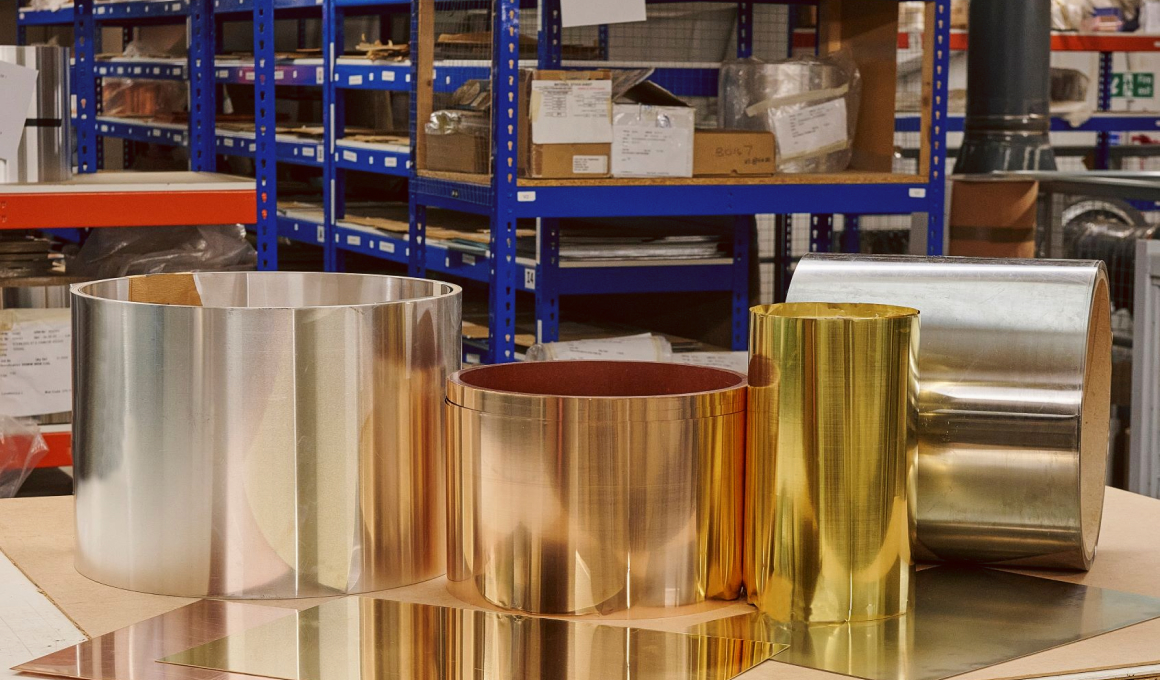 1
1
Qualitetch offer a huge range of metals for etching including: Stainless Steels, Carbon Spring Steels, Copper, Brass, Nickel Silver, Mild steel, Phosphor Bronze, Silver, Beryllium Copper, Aluminium, Nickel, Mu Metal, Alloy 42, Alloy 52 & Many Others.
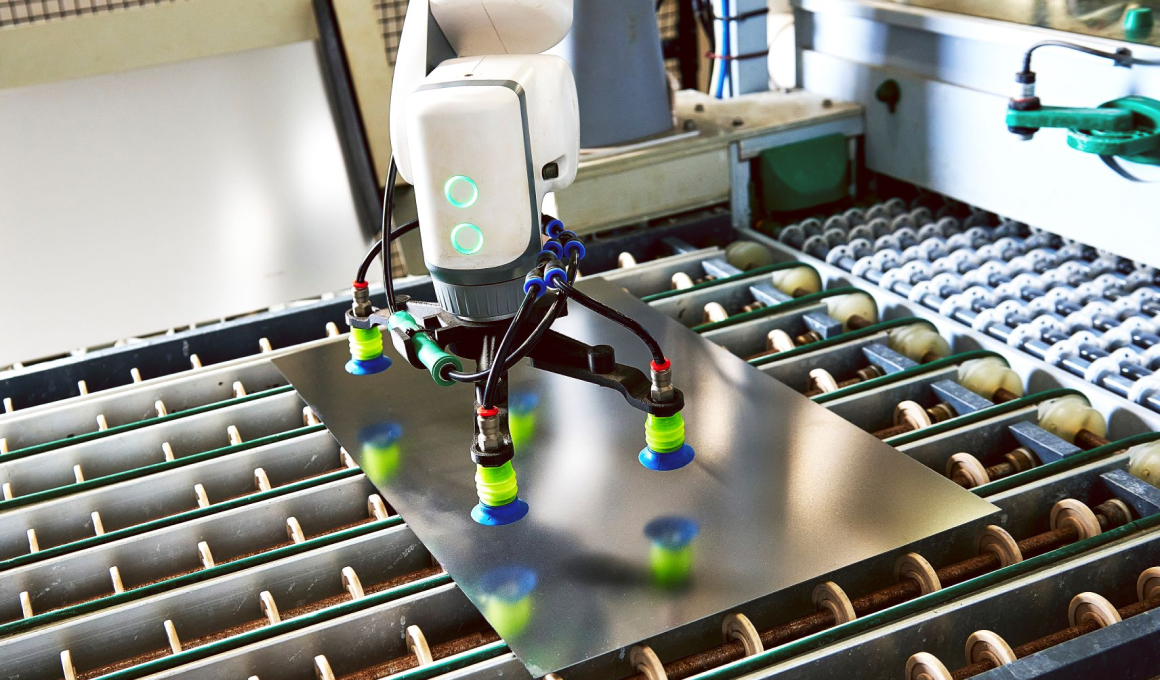 2
2
In order to ensure perfect parts every time, we need to clean the sheet metal to remove any impurities from the sheets surface before manufacturing your designs. This involves passing the metal sheets slowly through acid or alkaline solutions and rinsed prior to laminating, printing and developing.
 3
3
Metal cleaning involves passing the sheets slowly through conveyorised acid or alkaline solutions and rinsed clean prior to the lamination, printing and developing stages, depending on the sheet metal choice required.
 4
4
Once cleaned the metal sheets are coated with a UV sensitive photo resist, which melts to sheet in preparation for the printing process.
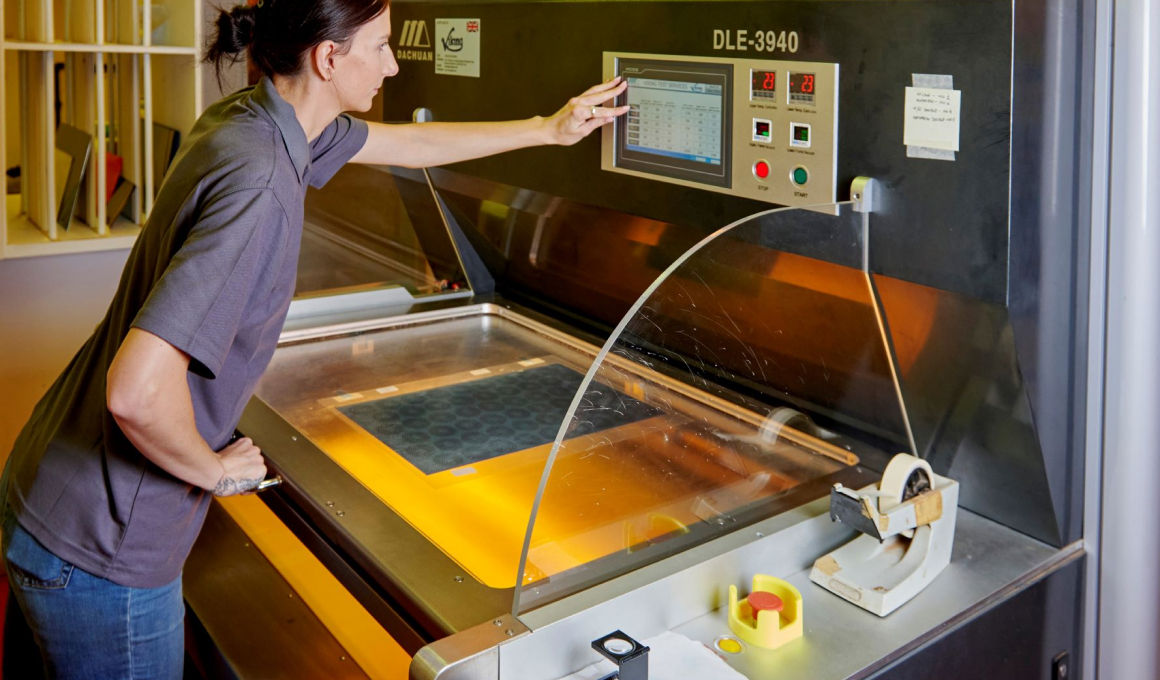 5
5
The printing process involves us taking your chosen profile design and applying it to a two sided top and bottom acetate photo film mask, that we then print your design onto the UV sensitive photo resist.
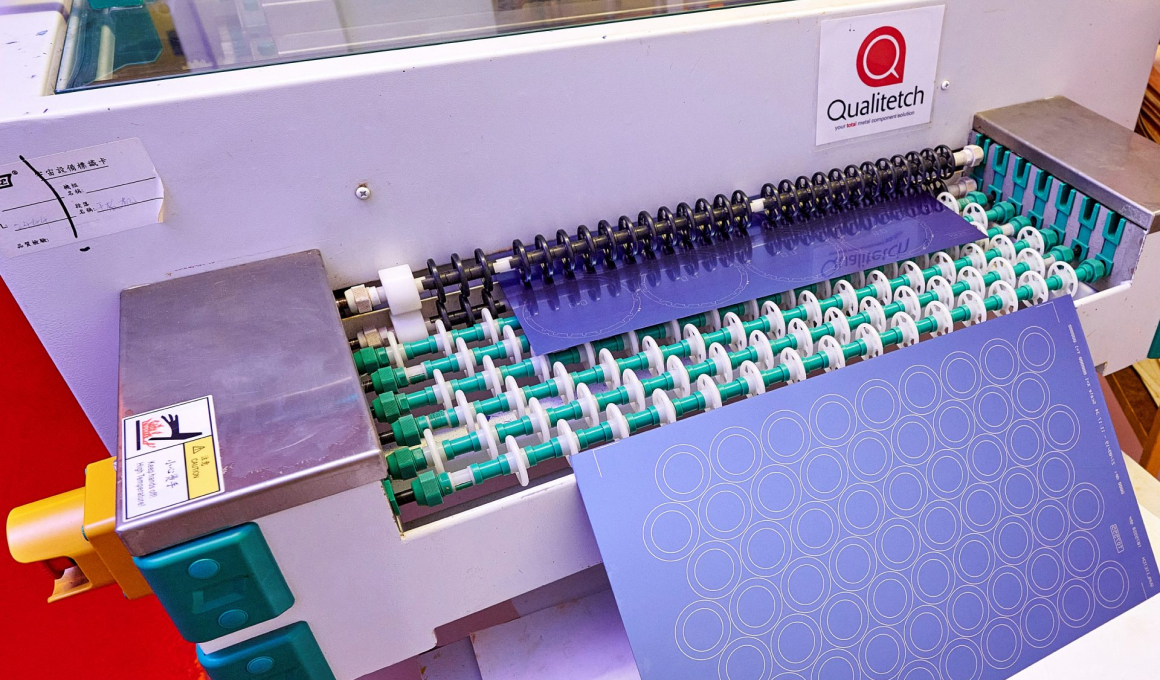 6
6
Once the metal sheet is printed with your chosen design, we then need to develop the sheet. This process effectively washes away the fine lines of the profile we are cutting, leaving raw metal track lines ready for the etching process to work it's magic very precisely.
 7
7
The etching process itself is an acid, usually ferric chloride, that effectively eats it's way through the metal at a known rate to ensure precision and targeted only in the areas you wish to remove, such as the profile track lines or other holes and features such a mesh. The rest of the sheet is masked by the UV photo sensitive blue resist, to protect the metal from the etchant until the parts are complete. This can be a very useful in a manufacturing process as the design can be very complex or include tabs or half etch fold bend lines at no added cost as you simply print your design rather than needing expensive machining time. Following an on-line dimensional check, all that is then required, is for us to strip and remove the UV photo sensitive resist coating and the parts are ready for full QA Inspection.
 8
8
At Qualitetch we offer various levels of QA inspection depending on our customers needs, as we supply both major blue chip businesses all over the world as well as smaller local businesses and anywhere in-between, as the photo etching process is very versatile. We have various automated optical equipment to ensure you parts are accurately supplied to your drawings. We also offer levels of inspection including 100% inspection, PPAP levels, batch inspection, First article inspection (FAIR) and bespoke customer inspection as required.
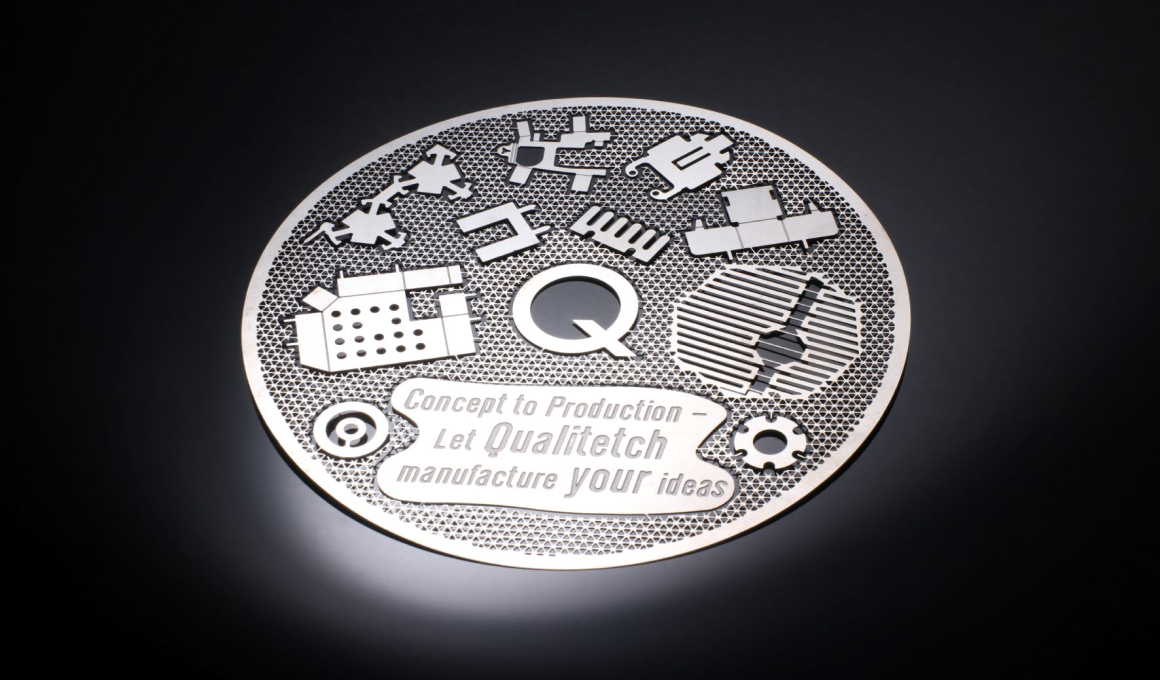 9
9
Once the parts are fully inspected and passed they are ready to be packed and sent to the customer, or for additional processes such as plating, forming, soldering, spot-welding, machining, EDM wire erosion, heat treatment or any other bespoke services required, such as assembly.
The photo chemical etching process is a fantastic way to produce both small quantity R&D or prototype components or equally suits much larger volume quantities, as we have etching capacity to meet all your manufacturing needs. We typically manufacture parts in sheet sizes of 500mm x 305mm and accurately nest your chosen profile part design to ensure we achieve the best possible sheet yield through production.
So why not let Qualitetch manufacture your ideas in metal and contact us today on 01354 658787 or sales@qualitetch.com
Bipolar Plate manufacture & hydrogen fuel cells & Electrolysers through chemical etching
View the ServiceWe offer a wide range of engineering solutions and process methods to suit your project needs.
View the ServiceSilver is one of the most common precious metals around the world
View the ServiceSteel is one of the most popular metal materials to use in manufacturing.
View the ServicePhosphor bronze chemical etching is a highly versatile and adaptable material for manufacturing your quality precision metal parts.
View the Service
